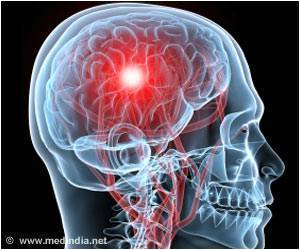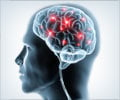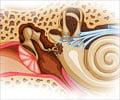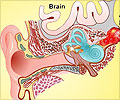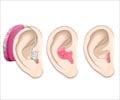Stroke occurs when the blood flow to the brain is cut off. Diagonal creased ear lobes could predict the risk of stroke, reveals new study.
- Stroke is a type of brain attack where the blood supply to the brain is cut off.
- Scientists have found creased ear lobes to be a warning sign for stroke risk.
- Creased ear lobes or Frank’s sign can often help to predict the future risk of coronary heart disease and peripheral vascular disease.
Of the 241 people involved in the study, who experienced stroke, more than three-quarters of them were found to have a mark known as Frank’s sign on their ears.
Frank’s sign was first described in 1973 by an American physician, Sonders T. Frank. It is a diagonal crease in the earlobe that could start from the tragus to the edge of the auricle in the age of 45 in varying depths.
Frank’s sign is often considered a predictor of future coronary heart disease and peripheral vascular disease.
What is the Link between a Creased Ear Lobe and Stroke?
Stroke risk may increase because of the clogging of the arteries. This could also lead to a poor blood supply to the ear lobes. The poor blood supply may thereafter cause a loss of elasticity and may in turn lead to visible creasing.
The research team from Israel has uncovered that the ear lobe crease should be considered by the doctors in the list of ‘classic risk factors for the development of stroke.’
Creased earlobe is often taken to be a sign of aging. A number of people including renowned film director Steven Spielberg and actor Mel Gibson were found to have creased ear lobes.
This was also applied to around 112 of the 153 patients who were found to experience a ‘mini-stroke.’
Dr. Yaqoob Bhat, clinical director for stroke medicine at Aneurin Bevan University Health Board in South Wales, said, ‘ The so-called Frank’s sign in the ear lobes has been recognised as having a possible association with advanced age, but some studies have shown its association with cardiovascular risk factors like diabetes, hypertension, ischemic heart disease, and peripheral vascular disease.’
‘This new study suggests an association with increased risk of stroke, but further studies are needed to assess its importance.’
What is a Stroke?
Stroke is a type of brain attack. It occurs when the blood flow to the area of the brain is cut off. Each year around 800,000 people may experience a new or recurrent stroke. Stroke is one of the leading cause of adult disability and the fifth leading cause of death in the United States.
Warning Signs of Stroke
- Sudden confusion
- Trouble walking
- Difficulty in speaking
- Face drooping
- Numbness or weakness of the face, arm or leg
- Dizziness
- Severe headache
- Sudden vision trouble in one or both eyes
- Saleh Nazzal, MD,Basem Hijazi, MSc,Luai Khalila, MD, Arnon Blum, MD et.al., 'Diagonal Earlobe Crease (Frank's Sign): A Predictor of Cerebral Vascular Events,' The American Journal of Medicine (2017); DOI: http://dx.doi.org/10.1016/j.amjmed.2017.03.059
- What is stroke? - (http://www.stroke.org/understand-stroke/what-stroke )
- Four letter Stroke Signs - ( http://www.strokeassociation.org/STROKEORG/WarningSigns/Stroke-Warning-Signs-and-Symptoms_UCM_308528_SubHomePage.jsp)
Source-Medindia


